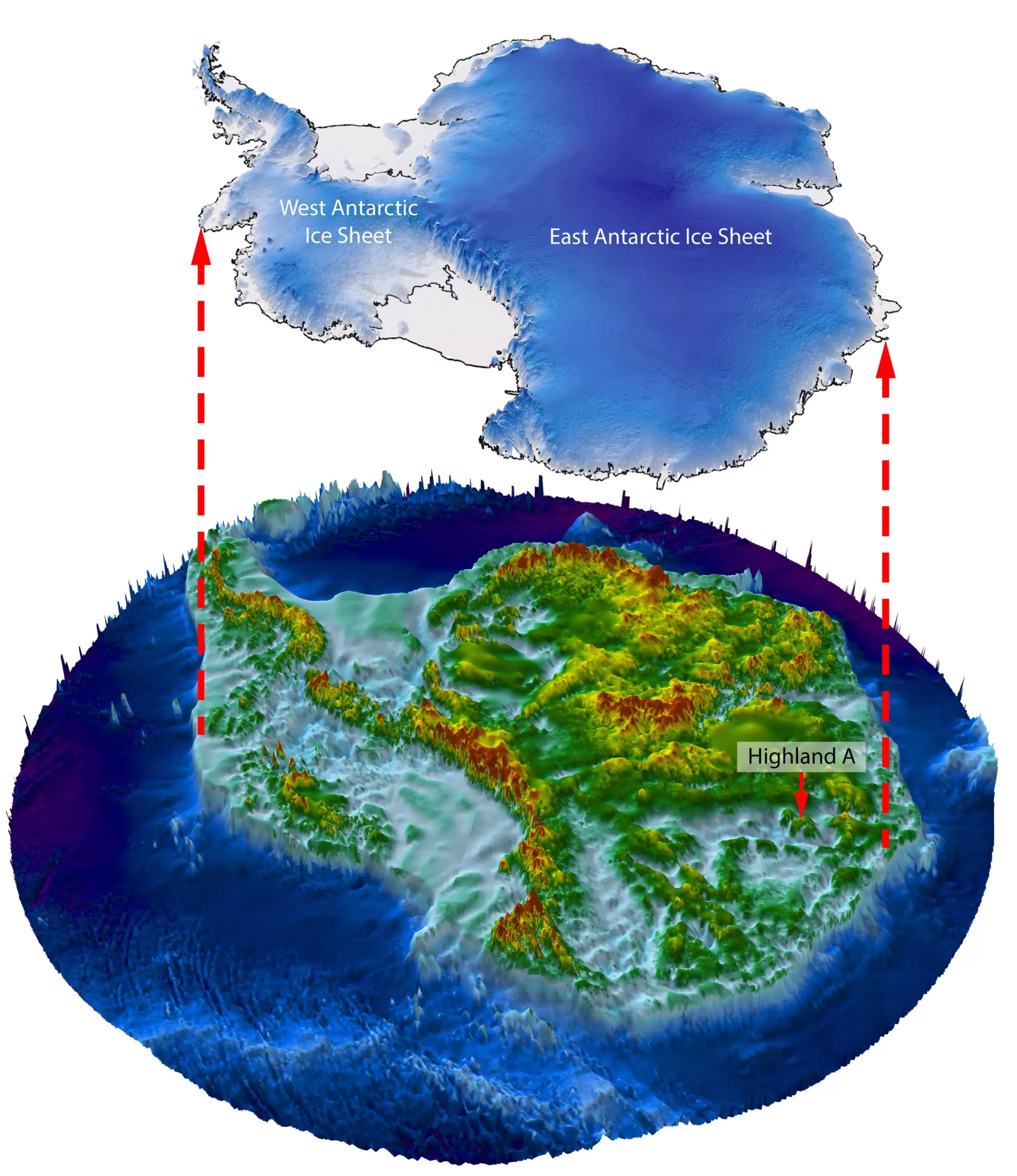The vast icy wilderness of Antarctica has always been a source of fascination for scientists and explorers alike. In recent groundbreaking research, scientists have revealed the existence of a hidden landscape beneath the Antarctic ice that has remained untouched for millions of years. This vast landscape of hills and valleys, covering an area larger than Belgium, holds ancient secrets that could help us understand the Earth’s history. However, the threat of human-driven global warming looms, potentially endangering this frozen time capsule.
The discovery of this hidden landscape is an exciting breakthrough in the field of glaciology. Led by Stewart Jamieson, a glaciologist at the UK’s Durham University, the researchers used a new approach rather than new data to uncover this astonishing find. By combining satellite images of the Antarctic surface with radio-echo sounding data, they were able to paint a vivid picture of a river-carved landscape with plunging valleys and sharply peaked hills. This hidden world, more than two kilometers below the ice, is comparable to the Snowdonia region of northern Wales.
It is believed that this newly discovered landscape was once a flourishing ecosystem, teeming with trees, forests, and possibly animals. However, the arrival of the ice millions of years ago froze this world in time. Determining the exact time when sunlight last touched this hidden landscape is challenging, but the researchers estimate it to be at least 14 million years ago. Jamieson speculates that it could be as long as 34 million years since its exposure, coinciding with the first freezing of Antarctica.
While this hidden landscape is currently hundreds of kilometers inland from the edge of the ice, the specter of global warming poses a potential threat to its preservation. The researchers warn that as the Earth’s climate continues to warm, we may enter atmospheric conditions similar to those that prevailed millions of years ago, when temperatures were several degrees Celsius higher than present. This could lead to the melting of the Antarctic ice and possible exposure of this ancient world.
The significance of this discovery extends beyond Antarctica itself. By studying this hidden landscape, scientists hope to gain valuable insights into the Earth’s geological history and understand the changes that have occurred over millions of years. It also provides an opportunity to uncover other ancient landscapes and perhaps even undiscovered ecosystems beneath the ice.
While the melting of the West Antarctic Ice Sheet is expected to accelerate in the coming decades, the tipping point for a potential “runaway reaction” of melting is still uncertain. The researchers take solace in the fact that past warming events did not expose this hidden landscape, giving hope that it might remain preserved for the time being. However, with the increasing impact of global warming, it is crucial for us to address climate change and limit its devastating effects on fragile environments such as Antarctica.
The discovery of this hidden landscape beneath the Antarctic ice is a testament to the remarkable capabilities of scientific research. It opens a window into a forgotten world, frozen in time for millions of years. As we continue to explore and study this hidden landscape, we must also confront the urgent need to mitigate global warming and protect the delicate ecological balance of our planet. Only through collective efforts can we ensure that future generations can witness the wonders that lie beneath the ice of Antarctica.


Leave a Reply